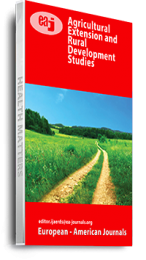In Ethiopia Durum wheat has been traditionally grown on heavy black clay (vertisols) on the residual moisture and recently being grown on light soils under rainfed conditions and it is consumed as leavened bread, common bread, macaroni, spaghetti, biscuits, and pastries. The national average yield is low because of the use of unimproved local cultivars, abiotic and biotic stresses. This research activity was conducted to create demand and awareness on the availability of the newly released varieties and evaluate the performance of the variety under farmers’ condition for further wider scaling up of the technology. The study went further to evaluate the preference of farmers concerning the demonstrated technology. Totally, fifty target farmers were selected for the research from ten kebeles of selected Districts. Training was provided for farmers, development agent and District experts. The newly released durum wheat varieties were planted on plots of 10 meter by 10 meter at Farmers’ Training Center and on 0.125 hectare of land on farmers’ field according to the recommended rate of fertilizer 100 kilo gram per hectare NPS and 150 kilo gram Urea with seed rate of 100 kilo gram per hectare. The results indicated that the highest average yield 3.5 tons per hectare was obtained from Utuba variety at Gelan Arabsa District of Sheger City. Utuba variety was preferred because of its higher yield, big grain seed size, heavy spike, market preference, good tillering capacity and palatable straw for animal feed while Tesfaye variety was preferred first by its disease resistance. Based on the findings, it is recommended that promotion of improved durum wheat varieties can contribute to durum wheat production and productivity improvement.
Keywords: Amhara, Demonstration, Oromia, durum wheat, improved

